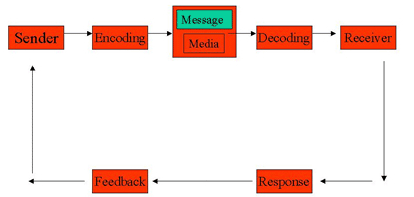Communication Barriers – Reasons for Communication Breakdown
April 3, 2025
 Communication Barriers – Reasons for Communication Breakdown
Communication Barriers – Reasons for Communication Breakdown
Communication is a process beginning with a sender who encodes the message and passes it through some channel to the receiver who decodes the message. Communication is fruitful if and only if the messages sent by the sender is interpreted with same meaning by the receiver. If any kind of disturbance blocks any step of…
 Corporate Meetings
Corporate Meetings
Corporate Meetings are very crucial part of business activities. They are a significant means of formal communication. Meetings are a venue for generation of new and innovative ideas. These meetings are multipurpose in nature actually. They aim at discussing feedback and receiving feedback on the spot. The information of prior importance is given during meetings.…
 Communication Flows in an Organization
Communication Flows in an Organization
In an organization, communication flows in 5 main directions- Downward Upward Lateral Diagonal External Downward Flow of Communication: Communication that flows from a higher level in an organization to a lower level is a downward communication. In other words, communication from superiors to subordinates in a chain of command is a downward communication. This communication…
Communication is a process of exchanging verbal and non verbal messages. It is a continuous process. Pre-requisite of communication is a message. This message must be conveyed through some medium to the recipient. It is essential that this message must be understood by the recipient in same terms as intended by the sender. He must respond within a time frame. Thus, communication is a two way process and is incomplete without a feedback from the recipient to the sender on how well the message is understood by him.

The main components of communication process are as follows:
Sender may be an individual or a group or an organization. The views, background, approach, skills, competencies, and knowledge of the sender have a great impact on the message. The verbal and non verbal symbols chosen are essential in ascertaining interpretation of the message by the recipient in the same terms as intended by the sender.
The choice of appropriate medium of communication is essential for making the message effective and correctly interpreted by the recipient. This choice of communication medium varies depending upon the features of communication.
For instance - Written medium is chosen when a message has to be conveyed to a small group of people, while an oral medium is chosen when spontaneous feedback is required from the recipient as misunderstandings are cleared then and there.
Your email address will not be published. Required fields are marked *